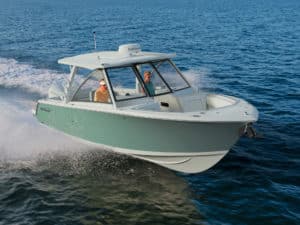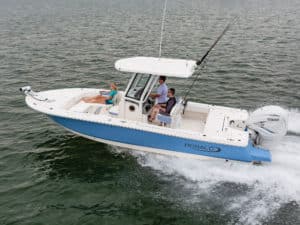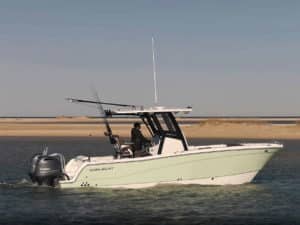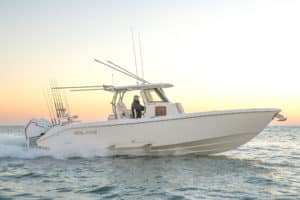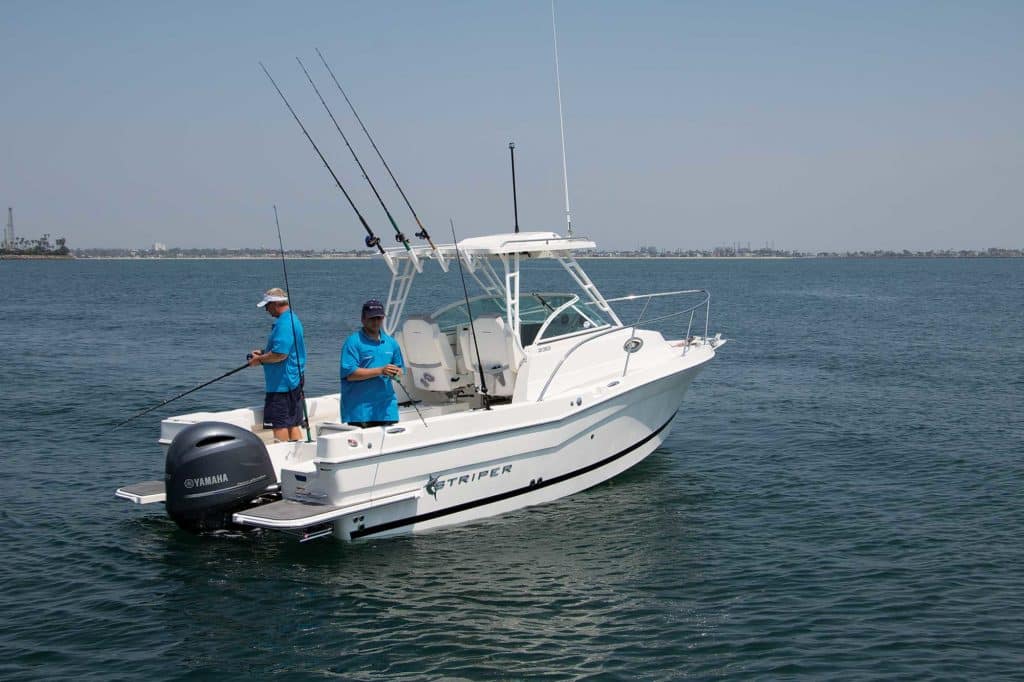
Pre-dawn darkness still shrouded the docks in Southern California’s Huntington Harbour, where I met Capt. Joe Oliver and first mate Nick Jones in late August for my Fish Trial of the new Striper 230 Walkaround.
Under the glow of an aft spreader light, we loaded up rods and tackle and stowed drinks and our provisions in the built-in cooler abaft the port pedestal chair. Oliver put the Yamaha F200 in gear and we headed out.
“We’re going to run to Catalina Island and try for some calico bass and (California) yellowtail,” he announced as we idled through the main channel.
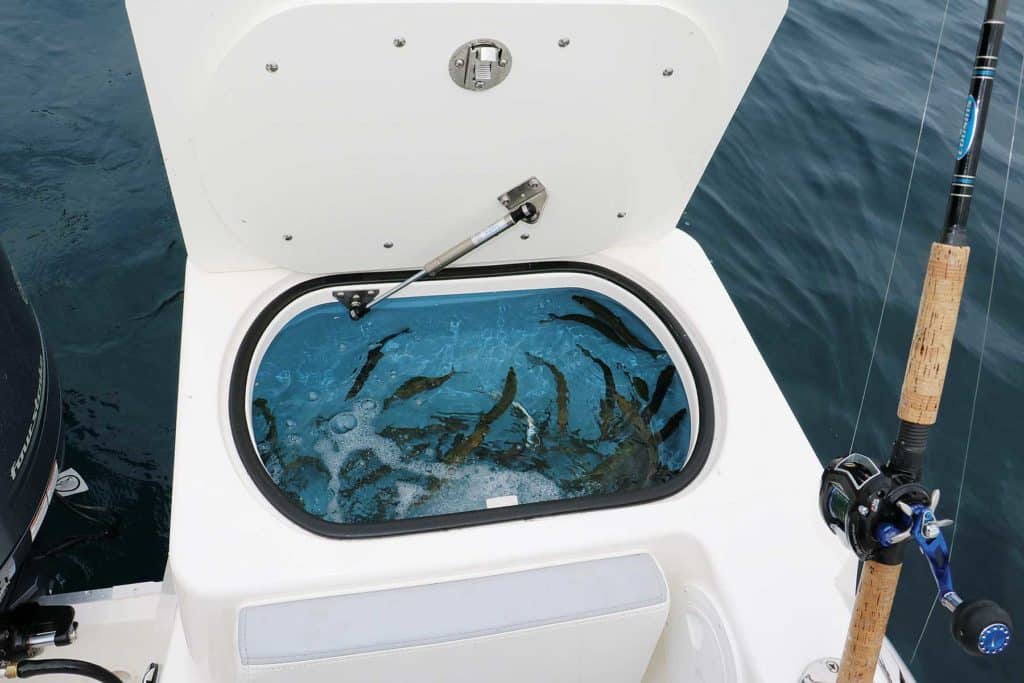
“Sounds like a great way to test this boat,” I replied, considering the 30-mile run and a three-foot swell out of the west. The picturesque coves of Catalina teem with fish, and the island’s quiet anchorages beckon anglers to spend more than a day. The Striper 230 Walkaround was designed for such trips, with features that let you fish hard and then grab a good night’s rest afloat in a roomy cabin. Time constraints would not allow us to overnight, but as we cruised west, I slipped through the companionway to the port side of the helm, flipped on the LED cabin light, and explored the accommodations. With 5½ feet of headroom and a V-berth measuring 7¾ feet long by nearly 5½ feet wide (at the aft edge), this is one of the largest cabins I’ve seen on a boat this size, with a length overall of 22 feet 8 inches.
The berth quickly converts into a dinette for those evenings when you want to eat indoors. The mini galley in the port aft corner features a sink, freshwater faucet, and a butane stove that tucks away when not in use. In the starboard aft corner is a portable marine head with a fitting that connects to a holding tank with a pump‑out port.
Just as I finished the cabin inspection, we arrived at the live-bait barge in Long Beach Harbor. By now, the first gray light of the morning had crept over the water, giving me a chance to check out the two covered livewells on my test boat: a standard 27-gallon tank in the port quarter and an optional 10-gallon well ($191) just abaft and below the helm chair. We loaded both with frisky Pacific sardines, then cast off and set a course for the island.
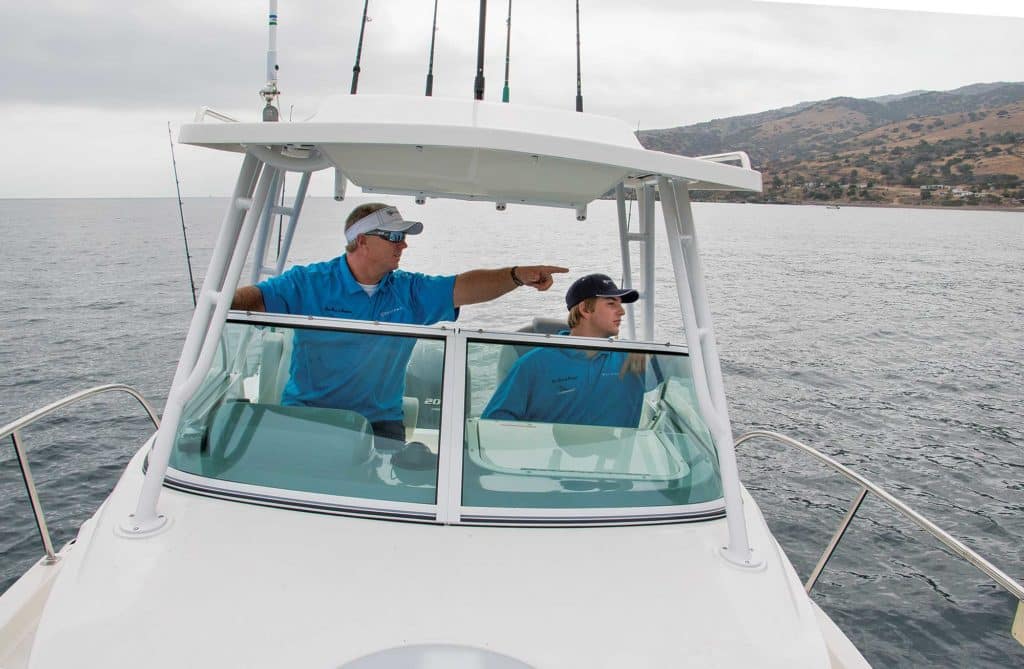
Electronics Choices
The 230 Walkaround I tested was so new that it did not yet sport marine electronics. “We let the customer select the electronics,” said Oliver, who serves as the official delivery captain for the local Striper Boats dealership, the Boat House of Anaheim.
Some Striper dealers also offer the optional factory electronics packages. The available packages include three from Garmin, four from Raymarine, and three from Simrad. All feature a single touchscreen multifunction flush-mounted display, with sizes ranging from 7 to 12 inches, depending on the package.
I found that the 30-inch-wide helm panel offered an ideal viewing angle on the Striper 230 Walkaround and could accommodate twin displays up to 9 inches each in a custom installation.
Dedicated engine instrumentation resided in a special eye-level pod above the helm panel. Striper installed an easy-to-access panel of rocker switches just to the left of the tilt-and-lock stainless steering wheel, with controls for the standard Lenco trim tabs to the right.
The standard hardtop features a sturdy powder-coated aluminum frame, integrated electronics boxes, four rod holders across the aft edge, a dome light, and an aft-facing spreader light. An elevated section on the hardtop provides an ideal location for a radar antenna.
Staying Warm
Temperatures were warm and breezes light on our summer-morning passage, but for cooler days, consider the optional canvas package ($1,471) with clear-vinyl enclosure curtains that extend on both sides from the top of the wraparound windshield to the hardtop in the front.
Twin fully adjustable helm chairs with fold-down armrests and flip-up bolsters offered superb support, with fold-down footrests below the seats to prop up your legs. Both chairs are set on pedestals that swivel aft — great for allowing the deckhand to watch trolling lines or for socializing when fishing is not a priority.
The sun had risen well above the horizon by the time we arrived at the island a little over an hour later. We decided to scout for signs of fish while running along the north-facing front shore. The Striper 230 Walkaround features a newly designed running surface. Handling proved sure-footed as we weaved our way around the points and along the beaches and bays. Hydraulic steering eased the task of piloting the 230.
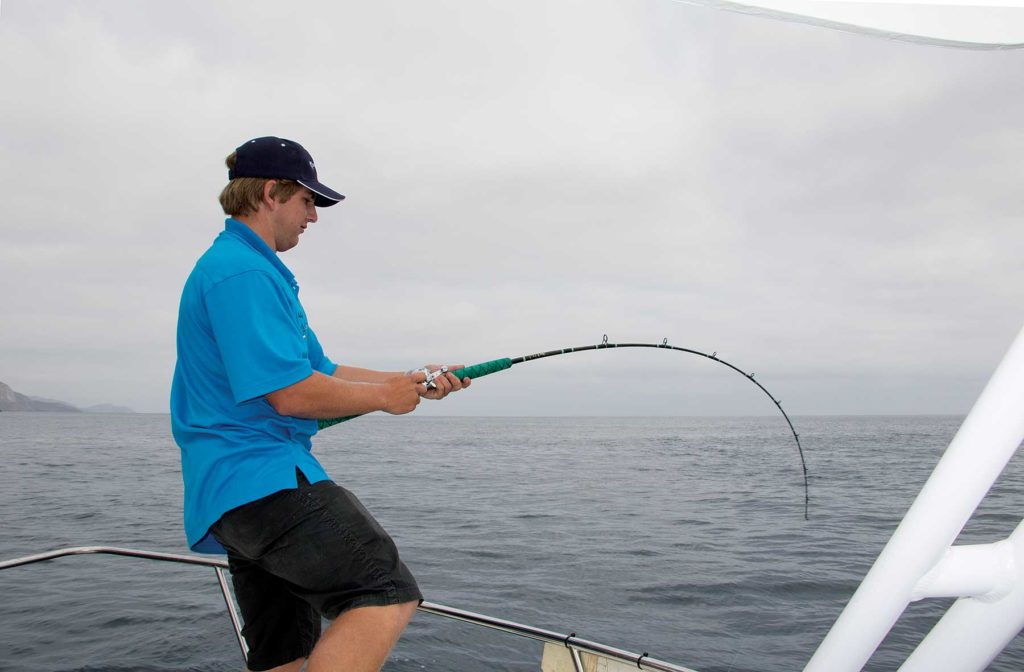
Smooth Ride
The new hull offered a posh ride. With 20 degrees of deadrise at the transom, the deep-V hull sliced smoothly through the choppy seas and boat wakes we encountered during this Fish Trial. The 230 displayed excellent tracking, whether running up-sea, down-sea or in a beam sea.
Scouting paid off when Oliver eyeballed calico bass feeding at the surface over a rocky reef about 50 feet off the shoreline. He slowed to idle as Jones went forward along the 7-inch-wide walkways to ready anchor. Grab rails along the hardtop and a high bow rail offer great security when walking forward, and the diamond nonskid sole helps ensure traction.
A roller facilitated the anchoring process, but if you plan to drop the hook often, you will appreciate the windlass option ($2,486). After retrieving the anchor about four times, Jones became a vocal proponent of adding this feature.
The calico bass proved eager to bite. I found padded coaming bolsters in the cockpit a genuine comfort as I braced myself while catching and releasing fish after fish. To create extra room in the cockpit, Oliver had removed the transom jump seats earlier in the trip, stowing them in the cabin.
After a few minutes of fishing, Jones hooked a more powerful fish than the bass we were catching. The fish took him around the boat once, and as he battled it from the bow area, we were hoping for a yellowtail. It turned out to be a Pacific bonito, which we released.
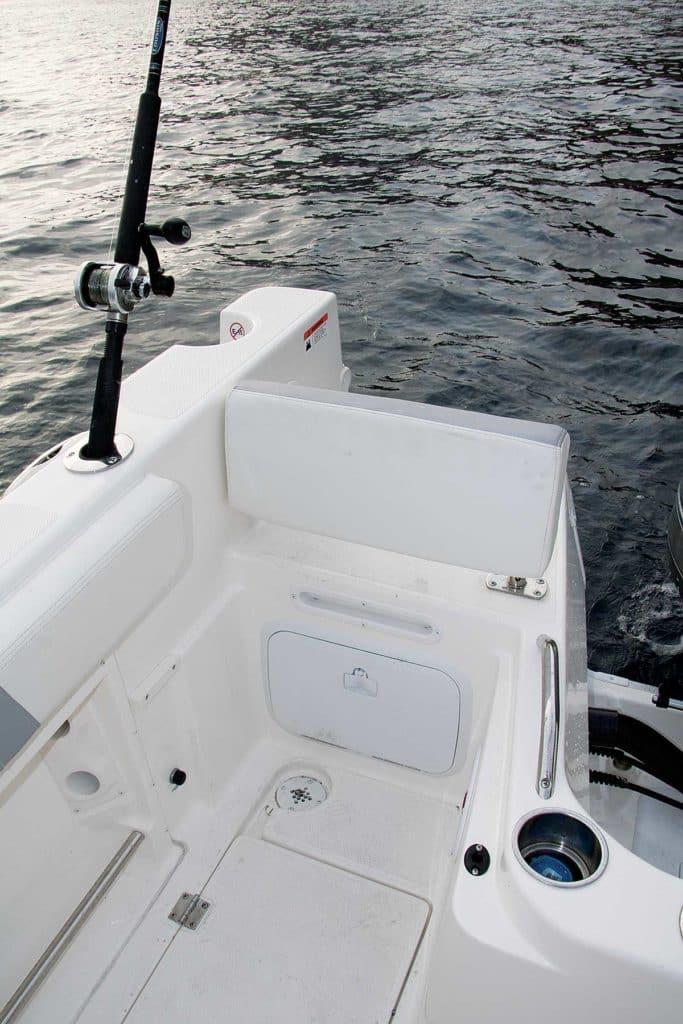
Twin Fish Lockers
Had we caught and kept a big, tasty yellowtail, it would have fit nicely in one of two insulated 12-gallon fish lockers that flank the cockpit. Macerators pump fish blood and guts overboard.
We did use the raw-water washdown to clean up the deck more than once. The Striper 230 Walkaround also features a freshwater washdown, as well as an optional pull-out freshwater shower hose ($256) in the transom.
The outboard on the Striper is installed on an open transom with a splashwell. A 25-inch-high bulkhead separates the well from the interior. I used the holders atop the bulkhead to stow my fishing rod when I needed to re-bait or rig lines.
Swim platforms on each side of the outboard extend a few feet forward along the hull, just above the waterline. It’s a stylish touch, but functional as well: Rub rails along the edge help protect the hull when docking. A boarding ladder deploys to the side from under the starboard swim platform.
Run the Numbers
The bite tapered off, so we decided to collect performance data. With 60 gallons of fuel and 560 pounds of crew, the 230 jumped on plane in seven seconds, reaching 30 mph in 14 seconds.
Turning a 15-inch-pitch Yamaha Saltwater Series II three-blade stainless-steel propeller, the Yamaha F200 four-cylinder outboard propelled the boat to a top speed of 38 mph at 5,600 rpm, where the engine burned 19.4 gph for 1.96 mpg at wide-open throttle. The most efficient cruising speed occurred at 4,000 rpm and 23 mph with a fuel-burn rate of 8.3 gph. That equates to 2.77 mpg and a cruising range of more than 350 miles based on the 129-gallon fuel tank.
Ultimately, the new Striper 230 Walkaround combines efficiency, comfort, fishing features and a smooth ride in an affordable package. If you like overnight stays or just want a boat so the kids can catch fish and then catch a nap, the 230 is worth a close look.
Striper 230 Walkaround Performance Specifications
Power: Yamaha F200 four-cylinder outboard
Load: 60 gal. fuel, three crew
Top Speed: 38 mph @ 5,600 rpm
Time to 30 mph: 14 sec.
Best MPG: 2.77 @ 23 mph (4,000 rpm)
Striper 230 Walkaround Hull Specifications
LOA: 22 ft. 8 in.
Beam: 8 ft. 6 in.
Deadrise: 20 deg.
Dry Weight: 3,761 lb. (w/o engine)
Draft: 1 ft. 7 in. (w/ outboard up)
Fuel: 129 gal.
Max Power: 300 hp
Base MSRP: $76,029 (w/ 200 Yamaha XA)
Striper Boats
Little Falls, Minnesota

